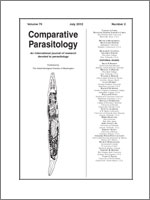Studies of rodent parasites are very important in relation to human and veterinary medicine and biology. Previous studies have demonstrated that the rate of infestation with ectoparasites and infection with nematodes, cestodes, and trematodes differs among locations. We surveyed the ectoparasites and endoparasites of 77 Mus musculus (house mice) collected from 41 poultry houses between April and December 2010 in northwest Iran. The rates of infection with ectoparasites and gastrointestinal helminths were 23.4 and 55.8%, respectively. We collected the ectoparasites Dermanyssus gallinae (prevalence 78%), Ornithonyssus bacoti (prevalence 11%), Polyplax serrate (prevalence 6%), and Myocoptes musculinus (prevalence 5%). We collected the gastrointestinal helminths Syphacia obvelata (prevalence 42%), Aspiculuris tetraptera (prevalence 19%), Syphacia muris (prevalence 18%), Cysticercus fasciolaris (prevalence 15%), and Hymenolepis diminuta (prevalence 5%). The chicken mite, Dermanyssus gallinae, and the tropical rat mite, Ornithonyssus bacoti are potential vectors of zoonotic pathogens. Hymenolepis diminuta can infect humans, and highlights the importance of house mice in certain zoonoses and suggests a more robust need for mouse control in the poultry houses.
How to translate text using browser tools
1 July 2012
Ectoparasites and Gastrointestinal Helminths of House Mice (Mus musculus) from Poultry Houses in Northwest Iran
M. Allymehr,
M. Tavassoli,
M. H. Manoochehri,
D. Ardavan
ACCESS THE FULL ARTICLE

Comparative Parasitology
Vol. 79 • No. 2
July 2012
Vol. 79 • No. 2
July 2012
ectoparasite
helminths
Iran
Mus musculus
poultry




